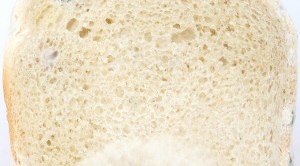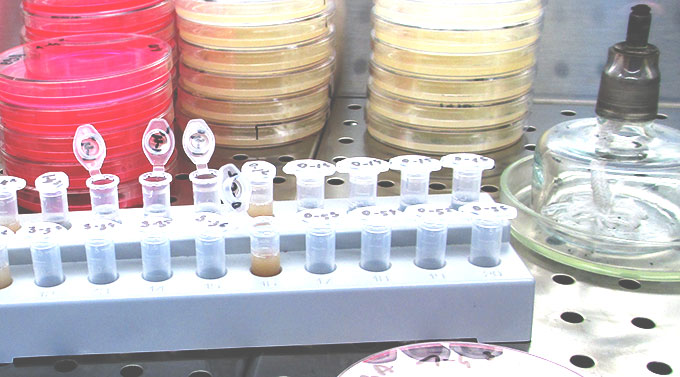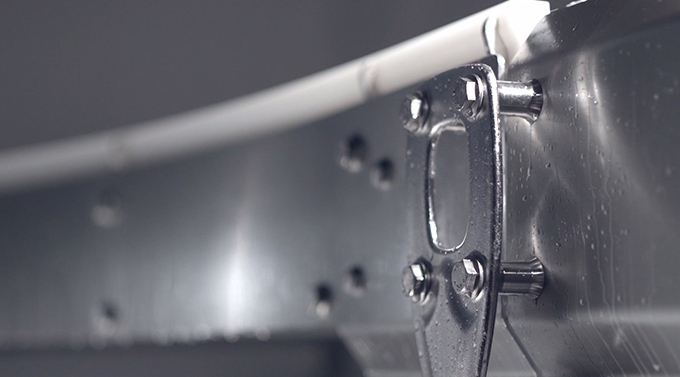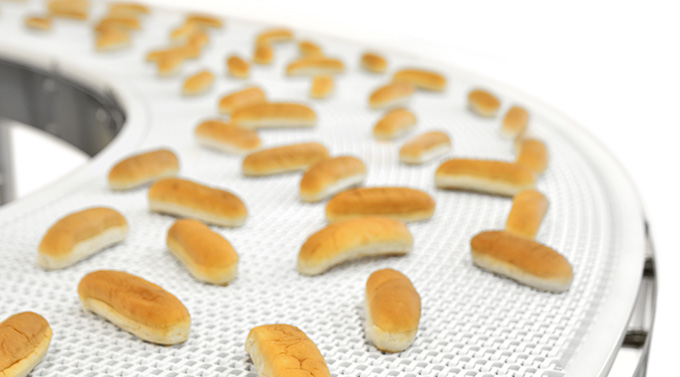
It is up to each food producer to ensure the delivery of a safe and sustainable product. To choose hygienically designed equipment is probably one of the most important steps to reach that goal. When choosing a conveyor system to operate in the food industry, there are many aspects to consider. Here are some tips along the way.
There are different causes why reinfections emerge
It is crucial to keep your automated production flow solutions clean when operating in the food industry. The equipment should be cleaned based on four aspects; time, energy, chemicals and temperature. If you clean frequently you don’t need to use as many chemicals and high temperatures as you need if you clean less frequently.
One fourth of all pathogenic outbreaks is caused by reinfection. The reasons why reinfections occur depend on a number of things, for example;
- Insufficient hygiene when handling the product incorrectly
- Cross-contamination
- Manufacturing and storing in inappropriate facilities that are not suitable for handling food
- Unclean equipment
- Infection via personnel
Mould and yeast problems are often caused by reinfections
 When reinfections arise, yeast and mould are often big parts of the problem. A few examples of reinfection caused by unclean equipment due to a substandard design are; when bread gets an abnormal odour, hot dog buns get mouldy and when yeast starts to grow on sliced bread. If you suffer from reinfection you have a great amount of work ahead of you to sort it out and address the problem. The above scenarios are examples of open equipment and open production. In a closed production with closed equipment, the problem could be ten times worse, with a number of pipes, nooks and crannies to consider.
When reinfections arise, yeast and mould are often big parts of the problem. A few examples of reinfection caused by unclean equipment due to a substandard design are; when bread gets an abnormal odour, hot dog buns get mouldy and when yeast starts to grow on sliced bread. If you suffer from reinfection you have a great amount of work ahead of you to sort it out and address the problem. The above scenarios are examples of open equipment and open production. In a closed production with closed equipment, the problem could be ten times worse, with a number of pipes, nooks and crannies to consider.
How to detect a possible reinfection
 The first step in investigating a possible reinfection is to identify and describe it. Which microorganisms are present and how did they end up in the products? Can they grow in the products? Are they pathogenic? Different microorganisms have different characteristics, origins and dispersal routes, as well as different potentials to survive the manufacturing process and grow in the products. Other questions you need to answer are the frequency and the extent of the infection. How often does the reinfection occur? Which products are affected? Is the reinfection more common in a specific time of the year, day of the week, or hour of the day? Which level and concentration does the reinfection have?
The first step in investigating a possible reinfection is to identify and describe it. Which microorganisms are present and how did they end up in the products? Can they grow in the products? Are they pathogenic? Different microorganisms have different characteristics, origins and dispersal routes, as well as different potentials to survive the manufacturing process and grow in the products. Other questions you need to answer are the frequency and the extent of the infection. How often does the reinfection occur? Which products are affected? Is the reinfection more common in a specific time of the year, day of the week, or hour of the day? Which level and concentration does the reinfection have?
The second step is to seek sources and dispersal routes. This requires extensive sampling where you need to work systematically and produce samples from the surfaces, from the air, from the water and from the products. As you can imagine, getting to the bottom of this takes a lot of time and work.
Reinfections can emerge in different parts of the factory and at different temperatures
 Reinfections can affect all types of automated production flow solutions; from inaccessible equipment, refrigeration equipment to equipment that needs dismantling. One might think that areas like refrigerators are safe since they are cold and cleaned often, but there is a lot of humidity inside, which bacteria love. Even in fans and dehumidification plants condensation is often a problem. Conveyor systems in the ceilings may also cause problems. If the hygiene isn’t impeccable it might accumulate condensation and dirt, which possibly could drip down and create for example fungus. Also, in floor drains and on the floor, there could be a risk of reinfection.
Reinfections can affect all types of automated production flow solutions; from inaccessible equipment, refrigeration equipment to equipment that needs dismantling. One might think that areas like refrigerators are safe since they are cold and cleaned often, but there is a lot of humidity inside, which bacteria love. Even in fans and dehumidification plants condensation is often a problem. Conveyor systems in the ceilings may also cause problems. If the hygiene isn’t impeccable it might accumulate condensation and dirt, which possibly could drip down and create for example fungus. Also, in floor drains and on the floor, there could be a risk of reinfection.
Characteristics that hygienically designed equipment should live up to
There are different requirements from different producers and manufacturers. The requirements also vary depending on what products you produce and the stage of the manufacturing process. A few examples of requirements can be; to keep the equipment clean from microorganisms, organic impurity and allergens as well as to measure the hygienic levels with pressure plates, swabs, ATP-swabs, or protein/allergen swabs.
Due to the high proliferation of microorganisms there are certain aspects that the conveyor equipment should live up to. For the equipment to be easy to clean and disinfect, it should have features such as flat surfaces, no protruding joints and be drainable. All production flow solutions should have hygiene standards as well as recommendations and methods for how to keep it clean.
The right production flow solution can perform miracles on your hygiene results
To sum it up, just as important as it is to keep an excellent hygiene when producing food, it is equally difficult and time consuming to sanitize and clean up in case the bacteria emerge. Therefore, it is crucial to choose the correct automated production flow solution and have a great knowledge of how to keep your factory clean. Hopefully this article and the prior hygiene articles; 4 food trends that affect the way we produce our food, Production trends that affect the durability of a product, and Hygienic design – reduce bacteria in the food industry have given you some new knowledge and information, and that fighting bacteria soon only will exist in your distant memory.
Please contact me with any further questions or visit our website for more information. You are welcome to share and comment the article in our social media channels.






Leave a Reply